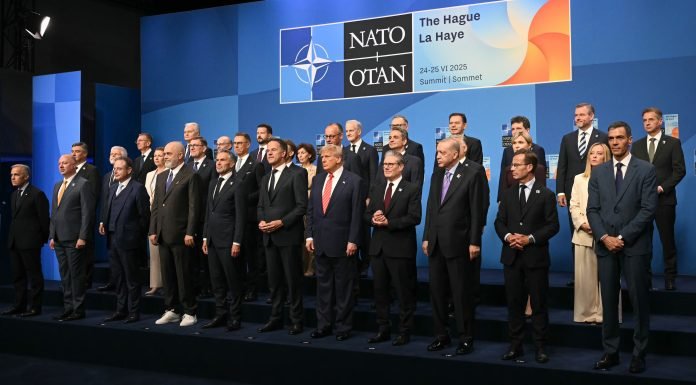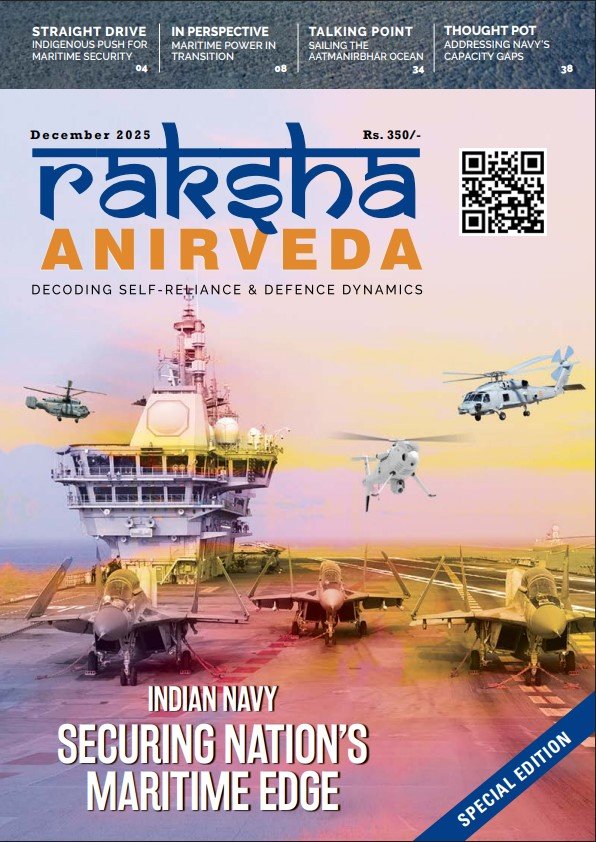The recently concluded NATO Summit in The Hague (June 24-25, 2025) has set a new course for the alliance, reflecting a profound recalibration in response to a volatile global security landscape. Far from being a routine gathering, the summit issued a series of landmark decisions that underscore NATO’s determination to bolster its collective defence, adapt to evolving threats, and address internal cohesion, particularly under the watchful eye of the American administration. The meeting delineates both significant advancements and lingering challenges that will define NATO’s trajectory for the coming decade.
A Resolute Leap Forward
The most striking outcome of the Hague Summit was the historic commitment to a 5% GDP defence spending target by 2035. This represents an unprecedented jump from the previous 2% benchmark, signalling a major shift in burden-sharing within the alliance. This isn’t merely a symbolic gesture; it’s a concrete financial pledge designed to significantly enhance NATO’s collective capabilities. The breakdown of this target – 3.5% for “core defence requirements” and 1.5% for broader “defence- and security-related investments” (such as critical infrastructure, cybersecurity, and defence industrial base strengthening) – demonstrates a comprehensive approach to modern security.
This move is a direct response to persistent calls for greater European contributions, particularly from the United States, and aims to ensure that NATO possesses the necessary resources to deter and defend against a spectrum of threats. The political will demonstrated to achieve this consensus, despite potential fiscal pressures on member states, highlights a newfound sense of urgency and shared responsibility among allies.
Beyond financial commitments, the summit emphasised on strengthening defence industrial capacity. Recognising the lessons learned from the conflict in Ukraine, where the pace of arms production has been a critical factor, NATO leaders focused on streamlining procurement processes, aggregating demand, and fostering transatlantic industrial cooperation.
The most striking outcome of the Hague Summit was the historic commitment to a 5% GDP defence spending target by 2035. This represents an unprecedented jump from the previous 2% benchmark, signalling a major shift in burden-sharing within the alliance
The release of an updated Defence Production Action Plan, the first NATO Commercial Space Strategy, and a Rapid Adoption Action Plan are tangible steps towards accelerating the development and integration of new technologies. This focus on industrial resilience is vital for ensuring sustained supply chains and rapid adaptation to emerging threats.
The summit also reaffirmed continued and enhanced support for Ukraine. While the declaration’s language regarding Ukraine’s NATO membership path was perceived by some as less explicit than previous statements, the commitment to providing direct contributions towards Ukraine’s defence and its defence industry as part of Allied defence spending is a significant development.
This integration of Ukrainian support into NATO’s own defence calculations signifies a long-term strategic commitment, aiming to bolster Ukraine’s ability to defend itself now and deter future aggression. Discussions around potential Patriot air defence system sales and boosting Ukraine’s domestic defence industry further illustrate this practical support.
Finally, the reaffirmation of deterrence and defence as NATO’s core tasks, against a backdrop of threats from Russia, terrorism, cyberattacks, and strategic competition, underscores the alliance’s primary mission. The increased investment and industrial capacity are explicitly geared towards ensuring NATO is “ready, willing and able to defend every inch of Allied territory,” reinforcing the bedrock principle of Article 5.
Beyond financial commitments, the summit emphasised on strengthening defence industrial capacity. Recognising the lessons learned from the conflict in Ukraine, where the pace of arms production has been a critical factor, NATO leaders focused on streamlining procurement processes, aggregating demand, and fostering transatlantic industrial cooperation
Opportunities: A More Robust and Cohesive Alliance
The ambitious decisions made at The Hague open several significant opportunities for NATO:
- Enhanced Deterrence and Credibility: The 5% defence spending target, if fully implemented, will significantly boost NATO’s military capabilities, sending a clear signal of resolve to potential adversaries. This increased capacity will strengthen the alliance’s ability to deter aggression across all domains – land, sea, air, cyber, and space – and reinforce the credibility of its collective defence posture.
- Greater Burden-Sharing and Transatlantic Unity: The new spending benchmark fosters greater equity in burden-sharing, which can lead to stronger transatlantic cohesion. By demonstrating a genuine commitment to investing in their own defence, European allies can assuage long-standing concerns from the US and potentially reduce any future tendencies towards American disengagement. This shared responsibility can translate into deeper strategic alignment and political unity.
- Technological Edge and Innovation: The focus on defence industrial capacity and rapid technology adoption presents an opportunity for NATO to maintain its qualitative military edge. By fostering closer collaboration between national defence industries and integrating cutting-edge innovations, the alliance can ensure its forces are equipped with the most advanced capabilities, staying ahead of evolving threats.
The summit also reaffirmed continued and enhanced support for Ukraine. While the declaration’s language regarding Ukraine’s NATO membership path was perceived by some as less explicit than previous statements, the commitment to providing direct contributions towards Ukraine’s defence and its defence industry as part of Allied defence spending is a significant development
- Long-Term Support for Ukraine: By integrating support for Ukraine into NATO’s core defence spending calculations, the alliance is laying the groundwork for a more sustainable and predictable assistance framework. This long-term commitment can provide Ukraine with the necessary resources to rebuild its defence capabilities and strengthen its resilience against future aggression, even if the path to full NATO membership remains complex.
- Strategic Adaptation to a Multipolar World: The summit’s emphasis on addressing a broader spectrum of threats beyond traditional state-on-state conflict – including terrorism, cyberattacks, and strategic competition – allows NATO to adapt its strategies and capabilities to a more complex and multipolar global environment. This comprehensive approach is crucial for remaining relevant and effective in the 21st century.
Challenges: Navigating Complex Realities
Despite the positive momentum, the Hague Summit also highlighted several inherent challenges that NATO must navigate:
- Implementation of the 5% Target: The most immediate challenge lies in the actual implementation of the 5% GDP target by 2035. While the political commitment is strong, translating it into sustained annual increases in defence budgets over a decade will require significant fiscal discipline and political will from all member states. Many European economies face high debt levels and competing domestic priorities, raising questions about the feasibility of such a substantial and rapid increase in military expenditure without impacting other crucial sectors like healthcare and education. There is also the risk of “creative accounting” where “defence- and security-related investments” might be broadly defined to meet the 1.5% component.
The future of transatlantic unity remains susceptible to political shifts, particularly in the US. A continued focus on meeting US demands for burden-sharing, rather than a more organic evolution of shared strategic interests, could lead to a transactional dynamic that strains long-term cohesion. The reduced plenary session time to accommodate Trump also highlighted concerns about the diminishing ambition of leader summits
- Defining “Core Defence Requirements” and “Security-Related Investments”: While the 3.5% and 1.5% split provides some clarity, the precise definition and oversight of what qualifies for the 1.5% category will be crucial. A lack of clear guidelines could lead to disparate interpretations among allies, undermining the overall effectiveness and transparency of the spending increase.
- The Ukraine Membership Question: While practical support for Ukraine was reaffirmed, the summit’s declaration on Ukraine’s NATO membership path was noted as a slight step back from previous statements, which had described Ukraine as being on an “irreversible path” to membership. This apparent softening, particularly in the context of perceived US President Donald Trump’s influence, highlights the ongoing internal divisions and sensitivities surrounding Ukraine’s full integration into the alliance. It risks creating a sense of frustration in Kyiv and could be interpreted by Russia as a sign of wavering commitment.
- Maintaining Transatlantic Cohesion Amidst Political Shifts: The summit successfully placated President Trump, who had consistently criticised European allies for insufficient defence spending. However, the future of transatlantic unity remains susceptible to political shifts, particularly in the US. A continued focus on meeting US demands for burden-sharing, rather than a more organic evolution of shared strategic interests, could lead to a transactional dynamic that strains long-term cohesion. The reduced plenary session time to accommodate Trump also highlighted concerns about the diminishing ambition of leader summits.
- Balancing Deterrence with Diplomacy: The strong emphasis on hard power and deterrence, while necessary in the current geopolitical climate, risks sidelining diplomatic efforts and arms control initiatives. A purely militarised posture might limit future opportunities for dialogue and de-escalation, creating a “hammer looking for a nail” mentality where military solutions are prioritised over diplomatic ones.
- Addressing China’s Role: Some analysts noted the absence of a direct mention of China in the summit’s communique, a departure from previous statements that had identified China as a “decisive enabler” of Russia’s war in Ukraine. This could reflect a divergence of views within NATO on how to approach China, or a strategic decision to avoid provoking Beijing, but it also means a potentially growing strategic competitor is not being collectively addressed with the same directness.
The absence of a direct mention of China in the summit’s communique, a departure from previous statements that had identified China as a “decisive enabler” of Russia’s war in Ukraine. This could reflect a divergence of views within NATO on how to approach China, or a strategic decision to avoid provoking Beijing, but it also means a potentially growing strategic competitor is not being collectively addressed with the same directness
A Pivotal Moment for NATO
However, the path forward is fraught with challenges. The successful implementation of the ambitious spending targets will require sustained political will and significant fiscal adjustments from member states. The delicate balance between supporting Ukraine and managing its membership aspirations, alongside navigating the evolving dynamics of transatlantic relations, will test the alliance’s unity and adaptability.
Furthermore, the broader strategic questions regarding engagement with, or confrontation of, rising powers like China, and the balance between military might and diplomatic engagement, remain critical long-term considerations. Ultimately, the success of the Hague Summit will not be measured solely by the declarations made, but by the tangible actions and sustained commitment of its members in the years to come, demonstrating their ability to translate ambitious pledges into concrete security and stability for the Euro-Atlantic region.
–The writer is Assistant Professor, ICFAI School of Liberal Arts, ICFAI University, Jaipur. The views expressed are of the writer and do not necessarily reflect the views of Raksha Anirveda






